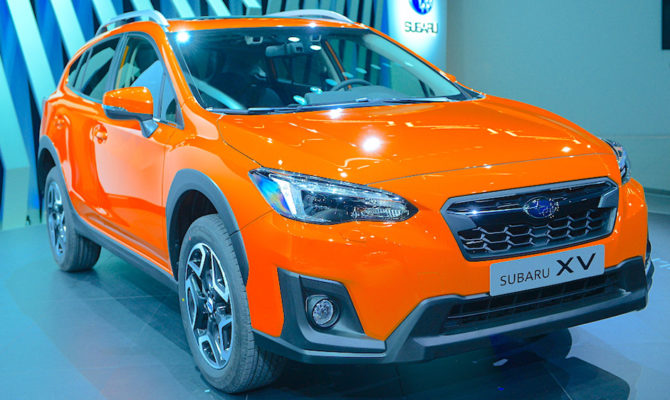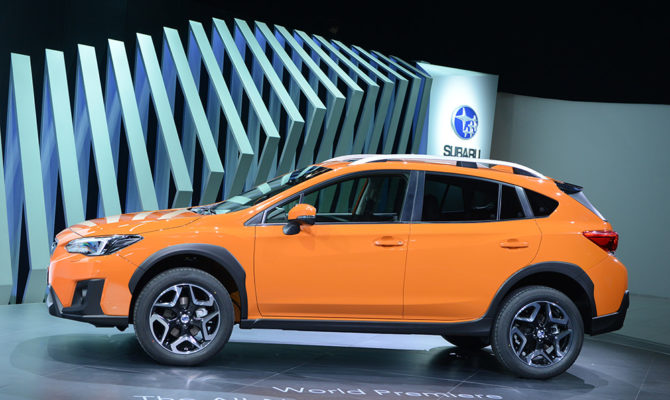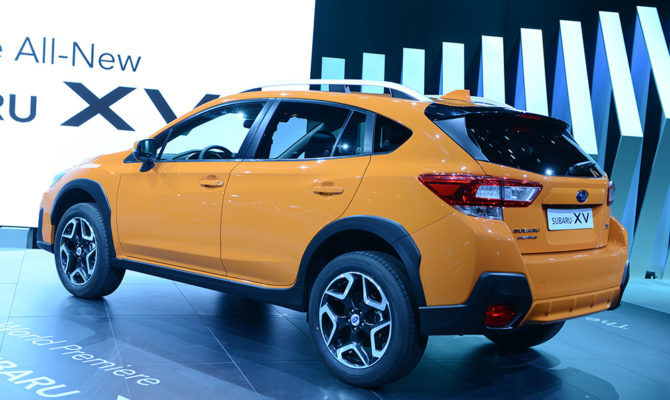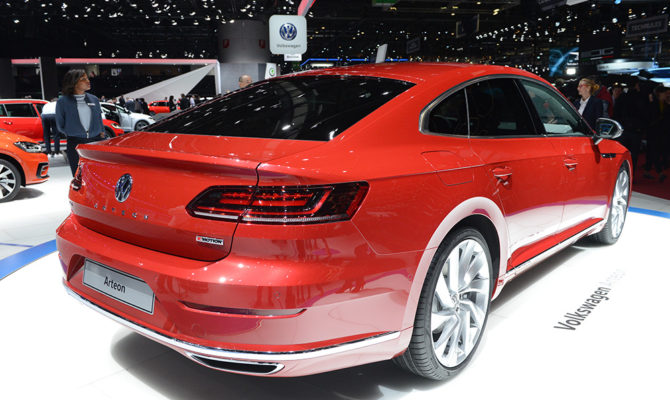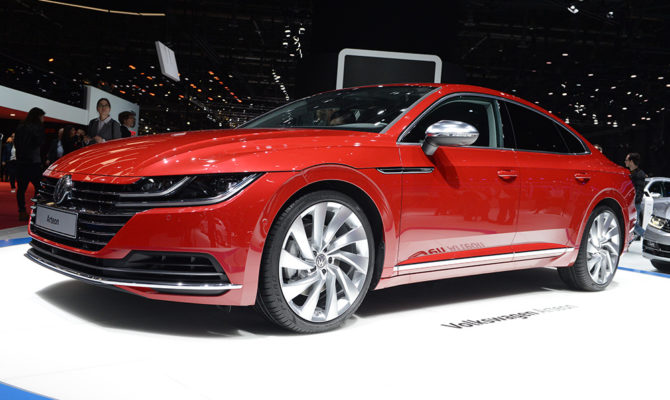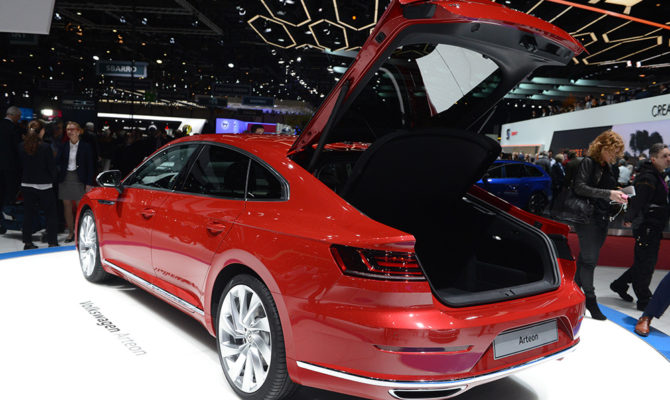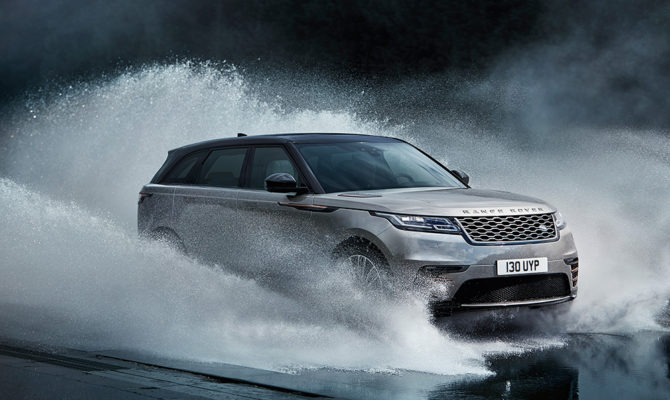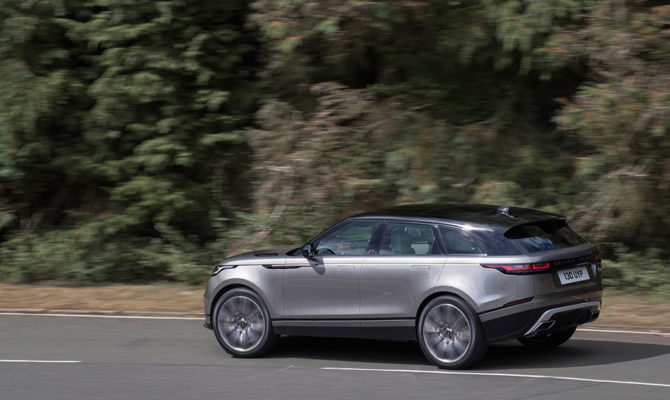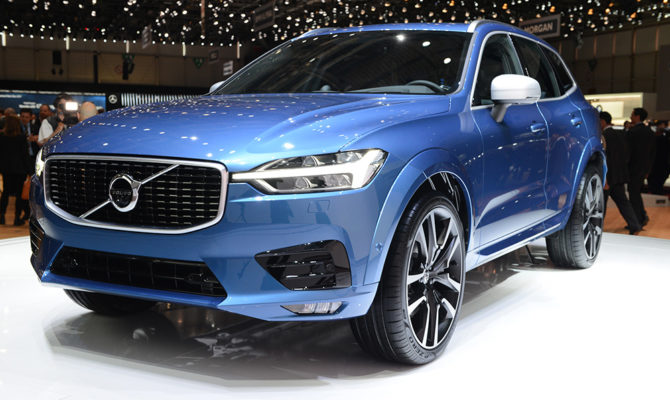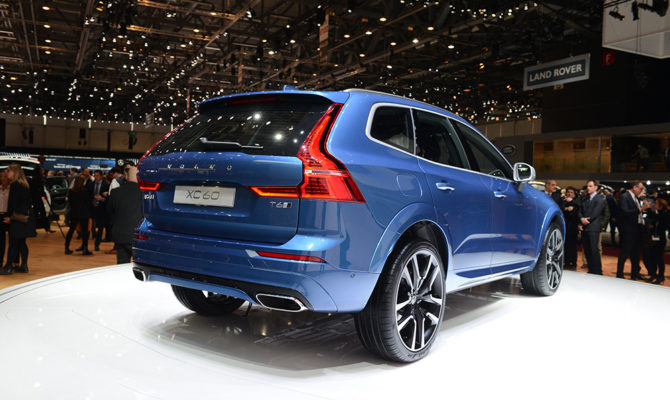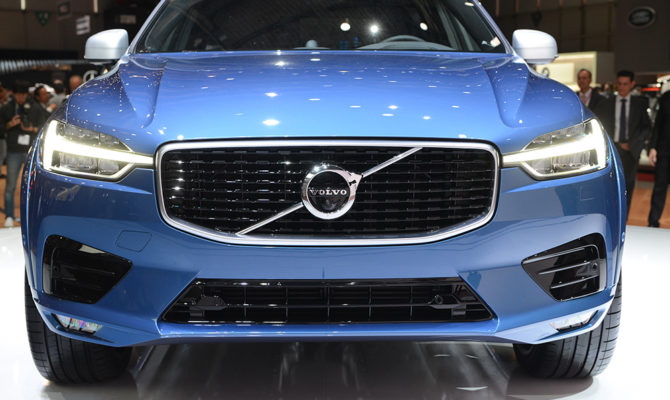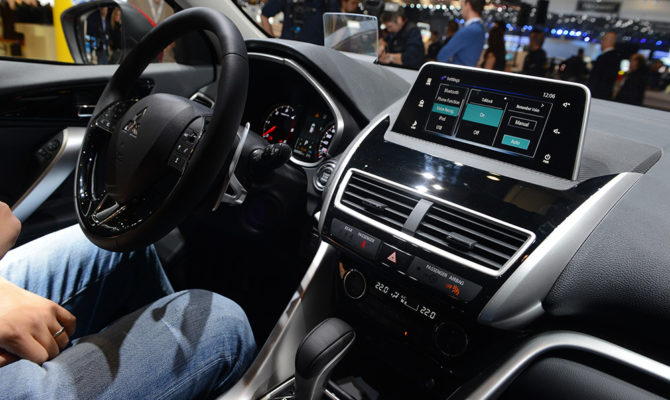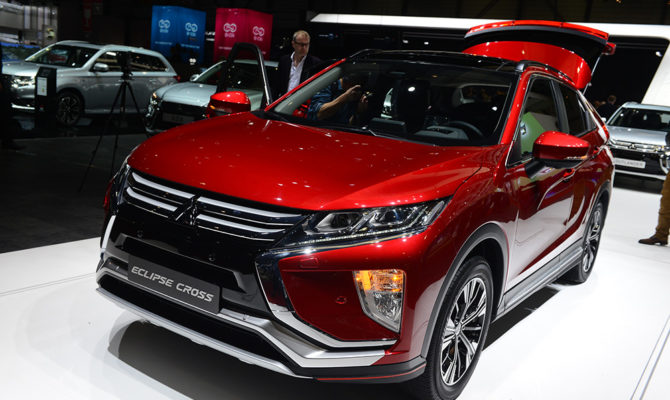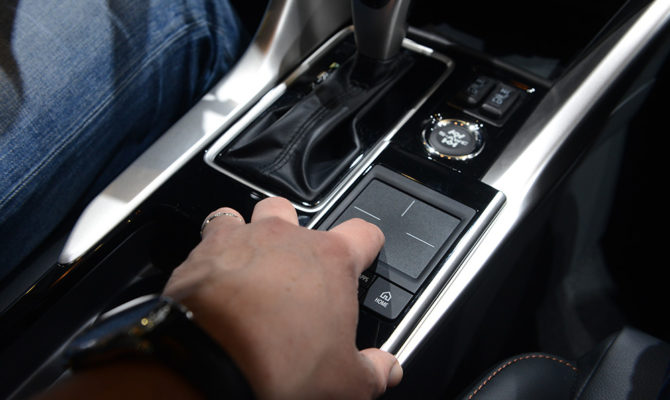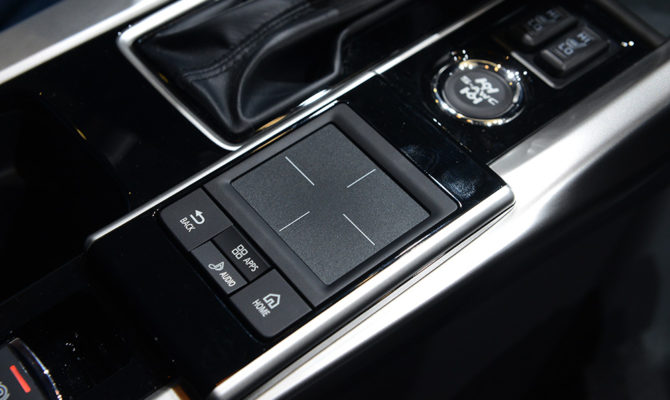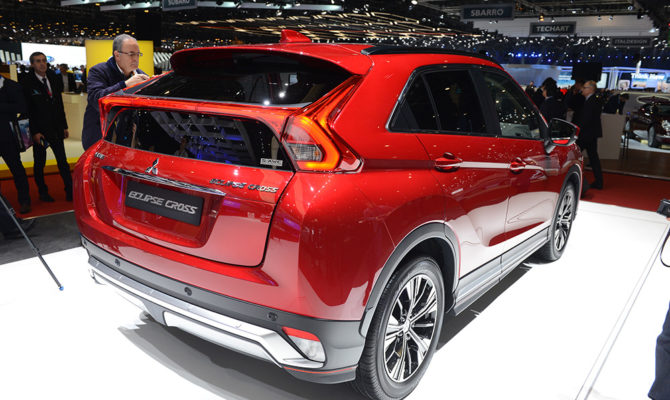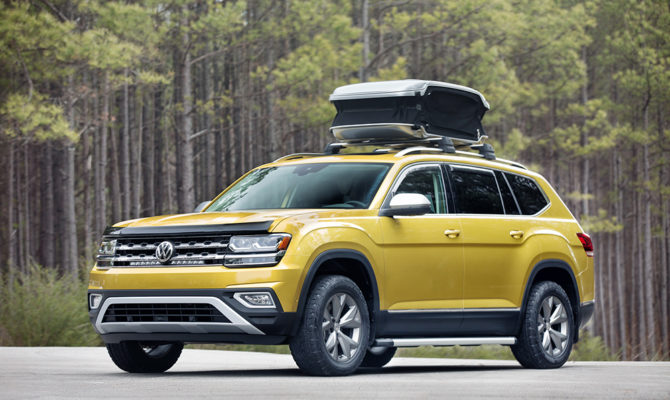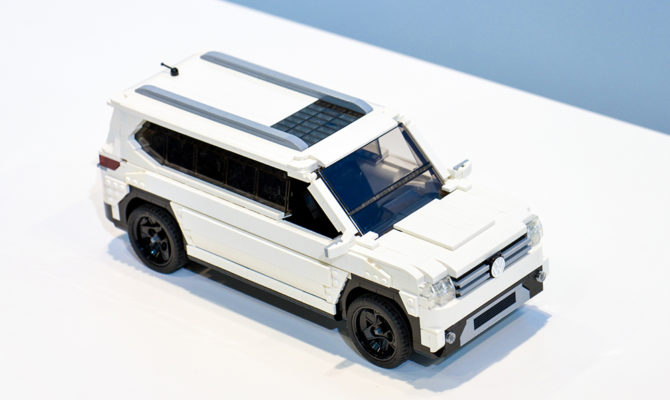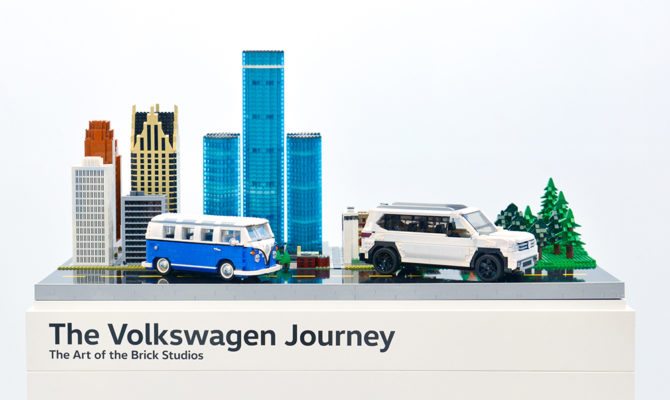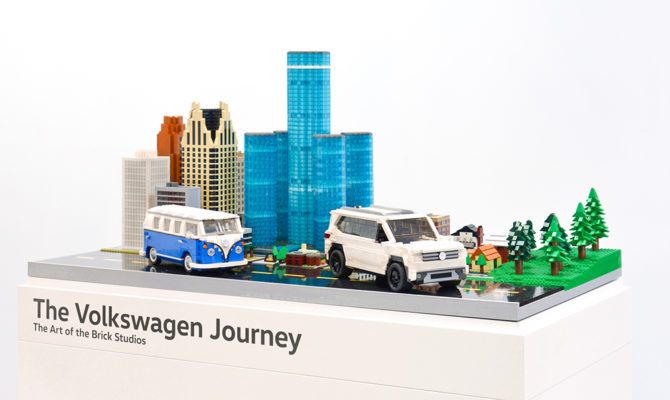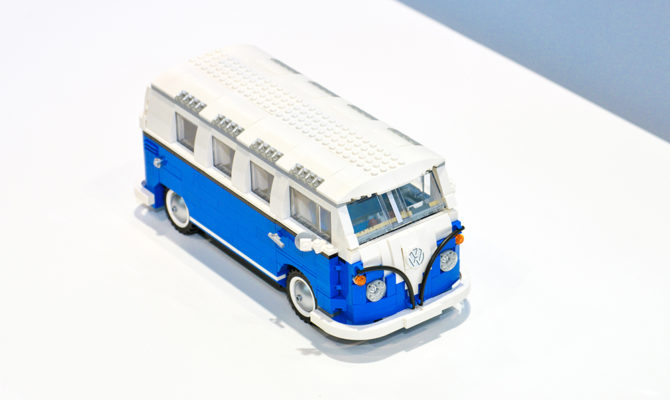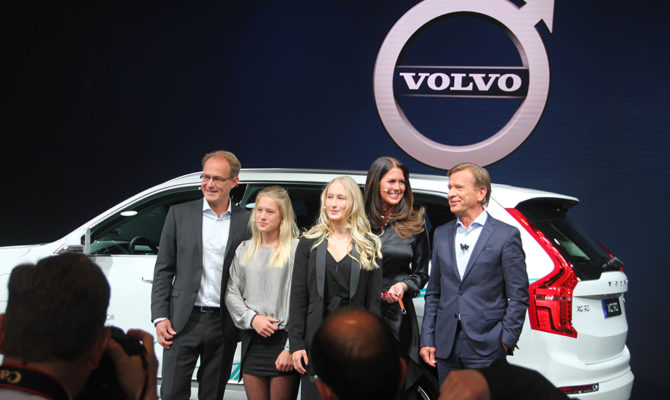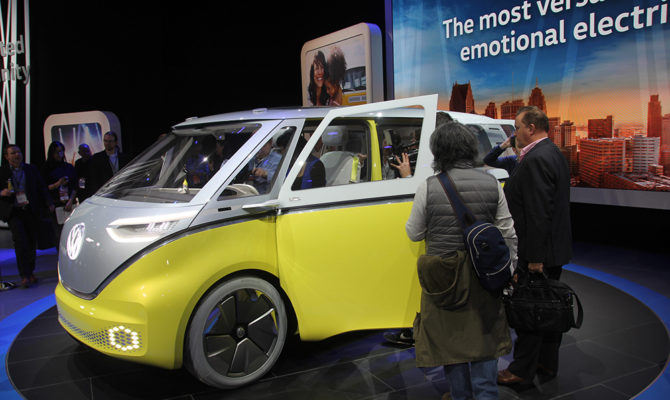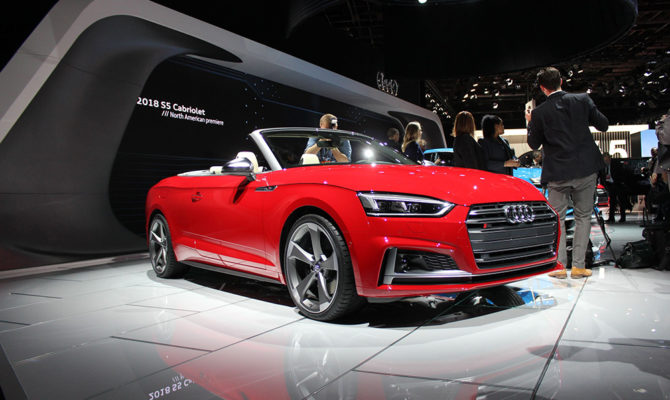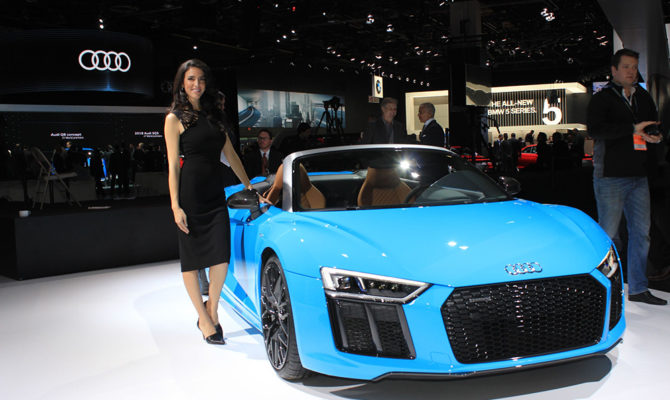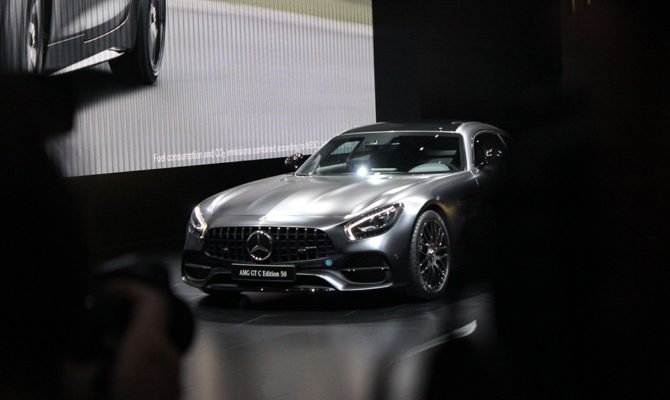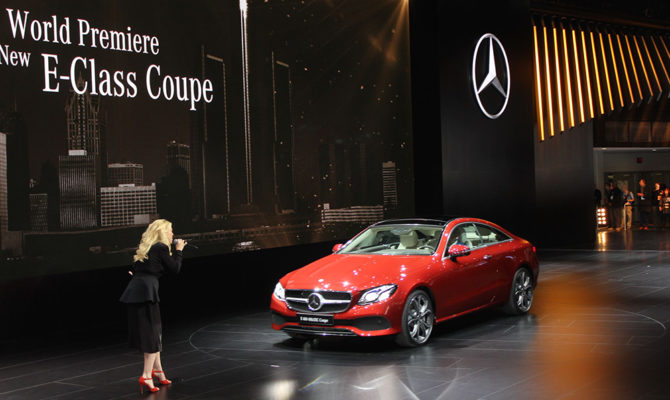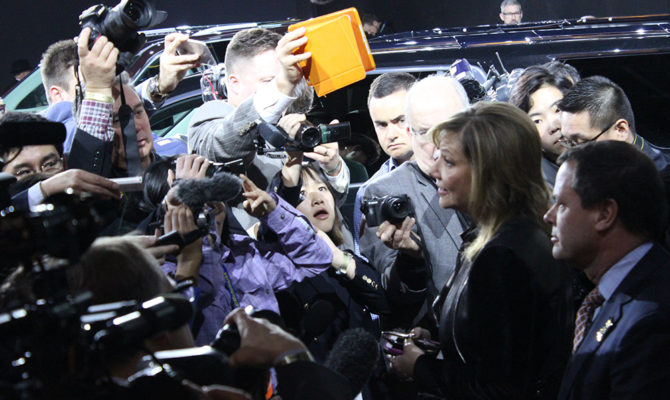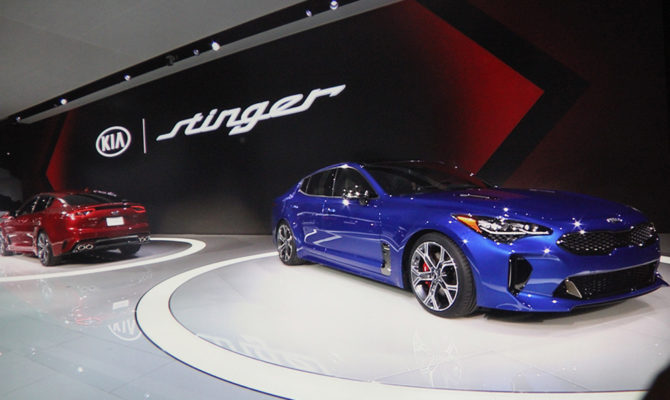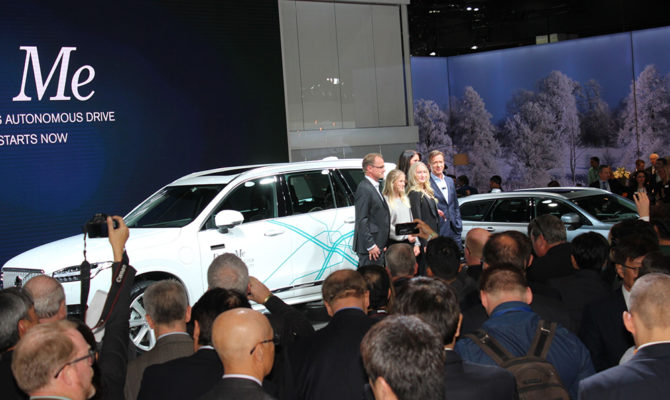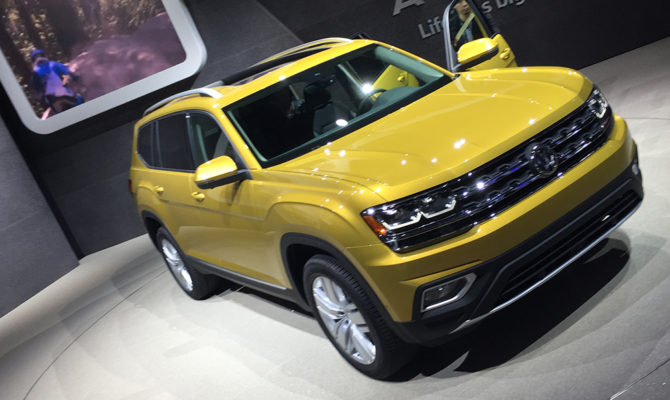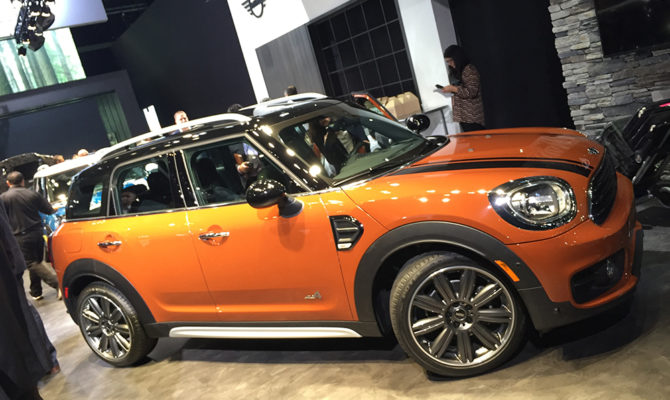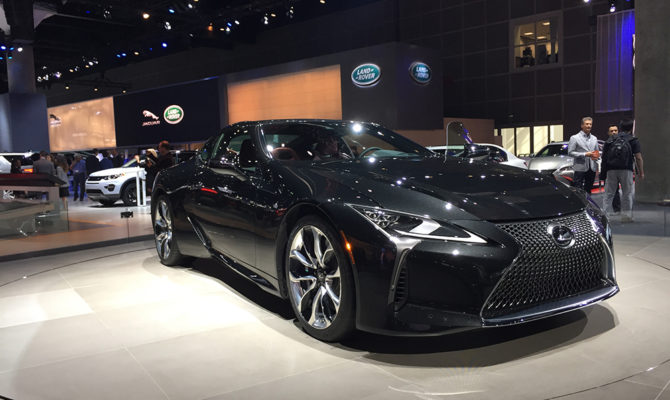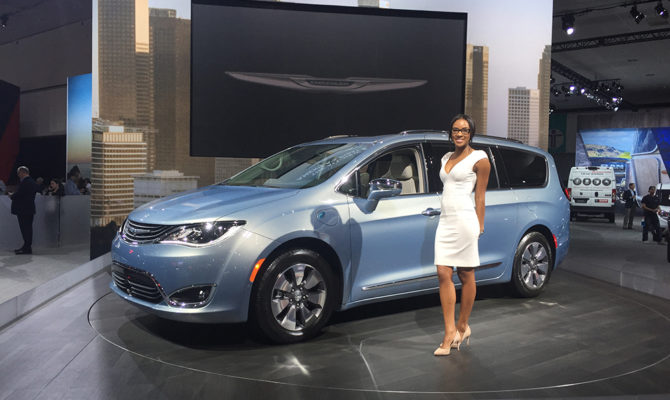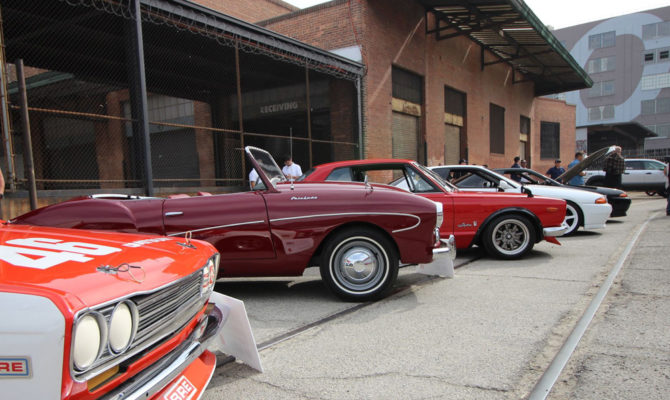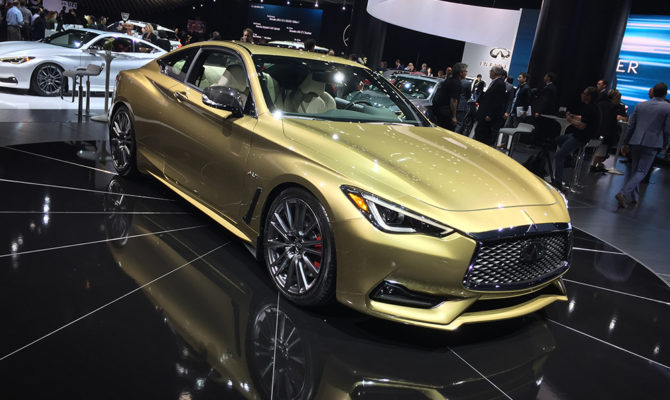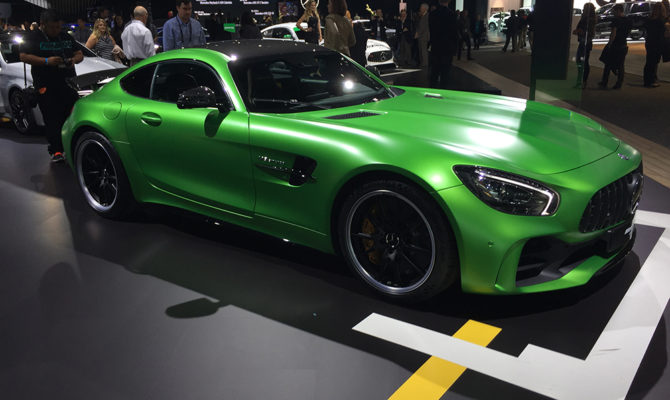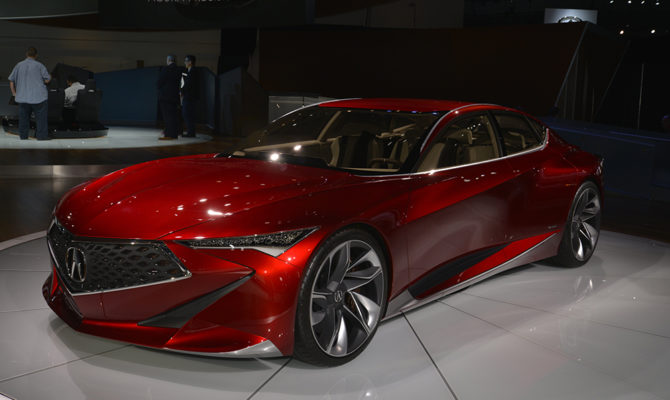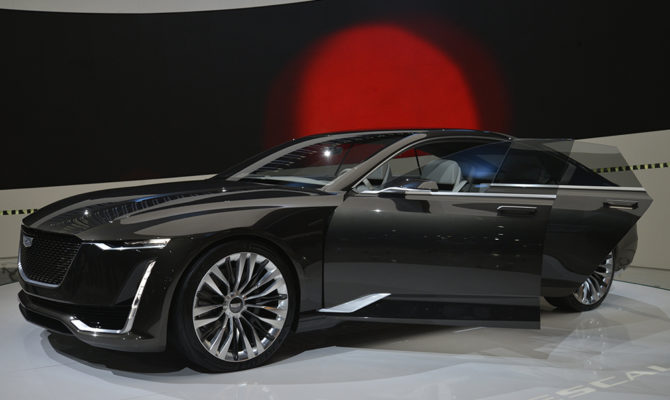Geneva, Switzerland –The second largest auto show on the European calendar is staged in scenic and historic city on the lake bearing the same name.
Typically, many cars are unveiled here that just don’t make it to our side of the pond but this year was different – several notable reveals will make it here.
Subaru Crosstrek
The Subaru Crosstrek has been a huge hit for Subaru with the highest satisfaction among Subaru owners ever since the original arrived in 2013. The all-new Crosstrek is built on the same Global Platform as the recent Impreza. The goal was to make a much more sophisticated driving car with world class safety. Another major selling feature of Subaru cars is the advanced safety suit called Eye Sight which is available, plus the introduction of dynamic headlamps with auto high beam and low beam. The goal was to achieve the IIHS Top Safety Pick Plus with these new features. The new platform is much more rigid and with a 2.0L direct injection 4-cylinder, standard all-wheel drive and an impressive 220mm of ground clearance, this go anywhere crossover is targeted for city dwellers who like to head out of town on the weekend. The new Crosstrek arrives this summer.
VW Arteon
VW is back in the big car market with a stylish GT sedan with impressive design and a practical layout. The Arteon is a mid-to-full-size four-door sedan with a coupe-like roofline and hatchback layout; like Audi’s A7. Built on an elongated platform shared with the Golf and upcoming Atlas SUV, the Arteon is a foray into the premium space. The Arteon will go on sale in Europe later this year with standard AWD and six available engines. For the Canadian market expect to see the Arteon arrive next year. Engines have not been announced for the Canadian market but a good bet would be a turbo 4-cylinder base engine and an optional V6, as has been announced in the Atlas SUV.
Range Rover Velar
The Velar is based on the same platform as the F-Pace Jaguar cousin but has a design that is all Range Rover. This stunning SUV is placed between the Evoque compact SUV and the Range Rover Sport. For the Canadian market it will be priced, starting at $62,300, which is $12,000 more than the F-Pace. It will be available with a turbo 4-cylinder diesel or a 380hp supercharged V6. Unlike the F-Pace the Velar will be available with an adjustable air suspension for off-road duties. The interior is much more polished than the F-Pace featuring two 10-inch centre screens for car controls and infotainment readouts. The rather sparse interior of the F-Pace is replaced with cloth and quilted accents that do look more upscale. The exterior of the Velar is like the Range Rover Sport and due to the popularity of that vehicle, this smaller option will be a massive hit for Range Rover. The Velar will be available this summer
Volvo XC60
Volvo has been on a vehicle renaissance lately with the highly successful XC90 crossover winning the North American SUV of the Year award last year. For 2017 Volvo hopes to capture lightning in a bottle twice with the smaller XC60. This new version will be available before the end of the year and should be a hit because it looks and shares many of the same components with the award winning larger sibling. The same turbo and supercharged 4-cylinder engine is standard with an available plug-in hybrid model. The interior features the same layout and the same level of finish is present. With a smaller and more agile footprint, plus Volvo’s reputation for advanced safety features will help accelerate the rented interest in the Volvo brand.
Mitsubishi Eclipse Cross
Some might remember the Mitsubishi Eclipse name on a car but the trend these days is to crossovers, so the name has been resurrected on the latest model called Mitsubishi Cross. This all-new crossover will sit between the RVR and Outlander models in size. With a turbocharged 1.5L 4-cylinder engine and continuously variable transmission, the target might be the Honda CR-V with similar tech. The design is sharp and looks like a fastback from some angles. The rear styling is edgy and might be a bit polarizing. The interior is a major step forward with a touch-pad controller for the new centre screen and the materials look fresh and upscale. The Eclipse Cross will arrive towards the end of this year.
“The Canadian International Auto Show media preview featured 41 “New to Canada” vehicle premieres and for the first time ever a “World Premiere”, which was video cast globally, of the 2018 Hyundai Accent.”
The all-new 2018 Volkswagen Atlas that will hit dealerships this Spring was designed to let people live a life as big as their imaginations, says the manufacturer.
At the 2017 Chicago Auto Show, Volkswagen demonstrated how it can be enhanced with smart accessories in a new concept, the Atlas Weekend Edition.
Volkswagen hopes enthusiasts may appreciate the throwback to the ‘Weekender’ packages offered on the classic Vanagon and Eurovan pop-up camper models. The Atlas Weekend Edition integrates several available accessories that enhance the Chattanooga-built SUV’s versatility with innovative cargo solutions.
The concept is based on an SEL Premium model, equipped with a 3.6-litre VR6 engine making 276 hp and an eight-speed transmission, paired with Volkswagen’s advanced 4Motion all-wheel drive with Drive Mode Select.
Riding on 18-inch Prisma wheels finished in a custom anthracite gray, the special edition features a modern variation of the pop-up roof—the Urban Loader cargo box. When empty, the Urban Loader offers a sleek, minimized appearance; when needed for hauling, it can expand to a 17.7 cubic-foot container. In addition, the Weekend Edition features base carrier bars for attaching accessories for skis, snowboards, kayaks or bikes. Reaching the extra roof storage or helping small children into the vehicle is easy with practical side steps.
Inside, a robust cargo divider provides a safe, pet-friendly barrier behind the second row, so that pets can ride in comfort. The second row also features an innovative universal tablet mount that allows passengers to bring any popular variety of touchscreen tablet along for a getaway. The design provides easy access to the home button on the most common models, and the tablets can use the available Media Control feature using Wi-Fi technology for Android and iOS tablets and smartphones.
Other Volkswagen accessories built into the concept include window and hood deflectors, a heavy-duty trunk liner with seat-back coverage, a privacy cargo cover, all-weather rubber mats, splashguards, and wheel locks. Many of these accessories will be available from Volkswagen dealers when the Atlas goes on sale in Spring 2017.
Volkswagen has reimagined VW’s adventurous spirit through a custom-built display made of more than 20,000 LEGO bricks.
Making its debut at the 2017 Chicago Auto Show, the 2 foot by 3.5 foot display highlights the evolution of Volkswagen design and the journey of VW vehicles with families through the decades.
The VW journey is set against a landscape that transitions from city life to outdoor scenery. A beloved VW Microbus takes drivers back to the family camping trips of yesteryear, while the new Atlas stands ready to transport the modern family through new terrain.
Like the original Microbus, the LEGO interpretation has a two-tone exterior, built with blue and white LEGO bricks. The replica stays true to the iconic model of the 60s with a distinctive “V-shaped” front fascia design, rounded headlamps, silver round side-view mirrors, silver baby moon hubcaps, a curved bumper in white, and a bold VW badge, placed front and center.
Made up of white LEGO bricks, the Atlas model highlights the seven-passenger capacity and utility of the actual vehicle. The model features a characteristic grille, accessorized black rims, roof rails, a rugged trailer hitch for hauling needs and unmistakable front and rear VW badges.
The 2018 Atlas goes on sale later this year.
Detroit, MI – It’s been a while since I last attended the annual North American International Auto Show media preview so the invite to the 2017 edition was a treat.
The crowded media feeding frenzies were just the same as ever but the new vehicle intro events, however, tend to be tamer affairs these days. The emphasis is largely on corporate business not show business, which, of course, is sensible … yet, I do miss that old razzle dazzle!
Not here in person, but the Donald Trump-effect was evident, following the president-elect’s unpleasant utterings about manufacturers who shift production outside of the USA. Almost every auto industry spokesperson talked about American vehicle production numbers, American production content, American employment numbers or planned future growth in America, etc. Oddly enough, Chrysler (aka FCA) did not host an auto show press conference this year, in its home city!
The Ford media presentation was another low-key affair, with top executives mainly talking about future mobility, sustainability and autonomous driving. An updated F150 (all-new 3 years ago) was paraded but the big news for Ford fans is that Ranger, a midsize pickup truck, is back in 2019 and an all-new Bronco will follow in 2020. Both will be produced in a Ford assembly plant in Michigan, USA.
My favourite auto industry speaker was Carlos Ghosn, Chairman and CEO, Nissan Motor Co. Ltd.. During his articulate and insightful keynote address he clarified the difference between an autonomous vehicle and a driverless vehicle. He expects there will be various levels of autonomy offered by auto makers, including Nissan in 2021. A driver will be able to choose when he/she wants it to operate this vehicle in an autonomous mode. The Ghosn definition of a driverless vehicle, on the other hand, is one that has no steering wheel or driver controls. Basically, it’s a robotic transportation appliance on wheels.
Volvo introduced us to the Hains family from Gothenburg. They are the first of 100 families who agreed to take an autonomous Volvo XC90 SUV and be part of Volvo’s long-term Drive Me research program. It will be the world’s largest autonomous driving test on real roads and with real people, according to Volvo. Volvo is also working with Uber on an autonomous ride-hailing program.
Volkswagen really set the room abuzz was the I.D. Buzz. Another microbus concept from VW and this one is autonomous and full-electric.
Bucking the driver-less trend of this year’s show, Kia introduced Stinger, a stylish driver-focused rear-drive (or all-wheel-drive) sports sedan. Its 3.3-litre V6 engine can produce 365 horsepower and get Stinger to 100 km/hour in less than 6 seconds.
The Four Rings rang with the world premiere of the company’s latest utility vehicle addition: the 2018 Audi SQ5.
Boasting new suspension and a powerful update to the power train – a 3.0L V6 that claims to blast the compact crossover from zero to 100 in 5.1 seconds with its 354 horses (and 369 lb.-ft. of torque) – marshalled by an eight-speed automatic transmission.
Audi also showed the Q8 Concept vehicle, billed as the “first full-size SUV in coupe design”, is the basis of what will become, they say, a production vehicle that will be launched for real in 2018 as a powerful (and of course luxurious) hybrid that are already looking forward to here at Driveway.
Mercedes Benz kicked off with a musical quartet that culminated in the German manufacturer’s personable chairman Dieter Zetsche taking the stage. The 2018 GLA compact SUV gets a new face for the new year, and redesigned bumpers. The E-class Coupe made its world debut, adding to an already comprehensive array of recent new models from Benz.
Los Angeles, CA – The upmarket Infiniti brand has just the car for an over-sized Christmas stocking on display at this city’s international auto show.
Neiman Marcus announced the inclusion of the Infiniti Q60 Neiman Marcus Limited Edition in the luxury retailer’s annual Christmas Book. Named this year’s Fantasy Gift, only 50 of this exclusive Q60 model will be offered at $63,000 (US).
Based on the Red Sport 400 version of the all-new Q60, this 400-horsepower coupe is equipped with a 3.0 litre-twin-turbocharged V6 engine and is painted in Solar Mica hue. The special Q60 includes an exclusive ivory leather weekender bag, a plaque with the car’s VIN number, Neiman Marcus-branded indoor car cover and letter of authenticity.
Only in L.A., you say. The west coast auto extravaganza never disappoints when it comes to highlighting the most exotic cars and futuristic concepts.
The Acura Precision Concept was developed the Acura Design Studio in California to express the brand’s commitment to “Precision Crafted Performance.”
“The Acura Precision Concept is more than simply a concept vehicle, it is a design study model that literally will shape the direction of all future Acura products around our Precision Crafted Performance DNA,” said Dave Marek, Acura global creative director.
Get this. The ultra-wide and curved centre screen is operated by a floating touch pad, suspended on the cantilevered center stack. Upon entry, the system scans each occupant and selects personalized features and functions, including maps, audio and customized vehicle performance settings.
Not to be outdone by these young whipper-snappers from overseas, a classic North American marque offers an eye-catcher. The Cadillac Escala — Spanish for “scale”— is a concept for a larger, more “elite and expressive companion” to the recently launched 2016 Cadillac CT6. So there, take that.
There are some off coloured cars on the show floor but nothing beats the weird green 2018 Mercedes-AMG GT-R. Merc describes it thusly: “the AMG green hell magno” special paintwork leaves no doubt as to the sports car’s origin, having spent most of its development time in the “Green Hell” of the Nurburgring racetrack.” We’ll take your word for it.
Back, down to earth.
The designers behind the 2018 Volkswagen Atlas, say they spent two years developing the new seven-passenger sport utility vehicle for North America.
Explains Klaus Bischoff, Head of Volkswagen Design. “We looked deep into how Americans are living with their midsize SUVs, and we wanted to get the Atlas right. Size does matter, especially for families. The roads are wider, the cities are bigger, and we grew into that.”
New AWD system helps keep compact SUV on icy roads
The Volkswagen GTI Roadster was created as a purely computer-generated car for the PlayStation classic “Gran Turismo 6”.
But there’s no virtual reality about the two-seat convertible displayed at the Canadian International Auto Show in Toronto.
A 3.0-litre V6 biturbo engine that produces 503 horsepower powers the digital-made-real roadster. Power is transmitted through a 7-speed dual-clutch gearbox (DSG) and 4MOTION all-wheel drive to the 20-inch wheels. The lightweight (1420 kg) super sports car reaches 100 km/h in 3.6 seconds on the way to a maximum speed of 309 km/h!
The driver and passenger are enclosed in a dual monocoque made of carbon fibre. The GTI Roadster is equipped with two race shell seats, with a seating position so low that occupants are nearly lying down.
The seats and the four-spoke grip steering wheel are covered with Alcantara. The steering wheel is mounted on a very long, exposed steering column, typical of a race car and is fitted with shift paddles that can be activated intuitively and ergonomically– without having the driver’s hands ever leave the steering wheel.
Viewed directly from the front, the Roadster looks like a typical GTI – but one originating from the next decade. The Roadster’s front end has a three-dimensional design with bumper modules that appear to hover. The bumper transitions into the wings on the sides, and a centrally integrated wide radiator grille with a honeycomb screen creates a distinct three-dimensional effect.
The radiator grille is framed by a surface finished in body colour. To the sides of this surface are the vertically arranged LED daytime driving lights and the painted exterior surfaces of the bumper. Above them are the classic red GTI radiator grille cross-stripe, VW badge and GTI logo, another air inlet with honeycomb screen and dual LED headlights. Beneath the headlights are two other narrow LED strips for the daytime running lights, which form an unmistakable light signature together with the vertical daytime running lights.
Will we see this beautiful roadster in the flesh, so to speak? – Anybody’s guess but one can dream.
“Why a Hugo Boss suit? – Because that brand looks good on everyone!” (more…)
The 2015 Volkswagen Golf TDI Clean Diesel, part of the family of vehicles that won the 2015 North American Car of the Year, has set a new Guinness World Record.
The award is for achieving the “lowest fuel consumption—48 U.S. contiguous States for a non-hybrid car” with an impressive 81.17 miles per US gallon of diesel (2.89 L/100 kms).
Travelling 13,250.53 kms (8,233.5 miles) around the United States in 16 days on $294.98US of Shell Diesel fuel, the Golf beat the previous mark of 3.01 L/100 kms.
Read: ‘The VW Lineup: Diesel Will Do If a Hybrid Is Too Pricey‘ by Alexandra Straub (Driveway Canada)
“Covering 8,233.5 miles on just 101.43 gallons of Clean Diesel fuel is a remarkable accomplishment, and solid proof of the efficiency and fuel economy of Volkswagen’s TDI Clean Diesel vehicles,” said Michael Horn, President and CEO, Volkswagen Group of America, Inc. “Whether on a long road trip, or even in daily commuting, the great mileage and long range of our TDI models is a pure convenience factor that few other vehicles on sale can match. It’s a simple formula: Less Stop, More Go!”
The record-setting Golf TDI departed from Volkswagen of America’s headquarters in Herndon, Va., and returned there to claim the record.
Wayne Gerdes, automotive journalist and founder of cleanmpg.com, was the primary driver. His co-driver was Bob Winger, an electronics engineer long involved in energy and conservation projects. Gerdes is an expert hypermiler who has set mileage records in more than 100 vehicles. In 2013, Gerdes set the previous record in a 2013 Volkswagen Passat TDI.
“Volkswagen’s TDI Clean Diesel engines are just amazing,” said Wayne Gerdes. “I don’t think people realize the potential mileage you can get from them. In our experience, it is possible to get truly impressive mileage results by using just a few simple fuel-saving techniques.”
The 2015 Golf TDI uses Volkswagen’s advanced turbocharged and direct-injection Clean Diesel engine to achieve an EPA estimated highway fuel economy of 45 miles per gallon when equipped with the six-speed manual transmission.
For the attempt, the Golf TDI used Shell ultra-low-sulfur diesel fuel and Goodyear Assurance Fuel Max tires which feature a fuel-saving tread compound to help increase fuel efficiency and offer confident all-season traction.
Contact the writer at keith [dot] morgan [at] drivewaybc [dot] ca
Recent Comments
- { Enjoyed your Forest of Bowland in the BMW X5M, particularly the photo of the BMW in front of the main part of Stonyhurst College where... }
- { Bantam designed the Jeep, not Willy's or Ford. The American military gave the original Bantam prototype to Willys and Ford to copy. There is plenty... }
- { All Escalades come with a 6.2-lilter V8 engine that produces 420 horsepower. A six-speed automatic is the only transmission offered and drives the rear wheels.... }
- { Alexandra is an excellent journalist. }
Popular Posts
- Journey to a ‘Sparkling’ Luxury Okanagan Resort “Four lucky readers will put a Dodge Journey’s weekend-...
- The Need For Speed: Hike Those Highway Limits More than half of those polled believe the province sho...
- Drives-U-Crazy… Erratic drivers. An early morning drive from Kelowna to Vancouver is nor...
- Readers Respond: The Pros and Cons of Increasing B.C. Speed Limits Increasing the speed limits will only increase risk to...
- Honda CR-V Review: The Compact Crossover To Get Things Done The CRV is a very stylish and aerodynamic crossover veh...


